
The most effective gene-editing tool available today is CRISPR-Cas9. Just this year, scientists have successfully used it for a wide variety of experiments, from modifying vegetables to encoding a Gif in bacterial DNA. However, most recently, it was used to remove a genetic disease from a human embryo.
Although extremely powerful, CRISPR-Cas9 does have its limitations; it’d only able to target DNA. Therefore, to extend its capabilities to RNA editing, scientists from the University of California San Diego School of Medicine developed a modification of CRISPR, and they’ve called it RNA-targeting Cas9 (RCas9).
In a study published in Cell, the UCDS team tested their new tool by correcting the kinds of molecular errors that cause people to develop microsatellite repeat expansion diseases, such as hereditary amyotrophic lateral sclerosis (ALS) and Huntington’s disease.
During standard CRISPR-Cas9 gene editing, a “guide” RMA is instructed to deliver a Cas9 enzyme to a specific DNA molecule. However, the scientists from UCSD instructed it to target an RNA molecule instead.

Tests that were conducted in the laboratory showed that RCas9 removed 95% of problem-causing RNA for myotonic dystrophy types 1 and 2, Huntington’s disease, and one type of ALS. This technique also reversed 93% of the dysfunctional RNA targets in the muscle cells of patient with myotonic dystrophy type 1, resulting in healthier cells.
Senior author Gene Yeo, a cellular and molecular medicine professor at UCSD School of Medicine, explained that “this is exciting because we’re not only targeting the root cause of diseases for which there are no current therapies to delay progression, but we’ve re-engineered the CRISPR-Cas9 system in a way that’s feasible to deliver it to specific tissues via a viral vector.
Across the world, an estimated 450,000 people are living with ALS. Roughly 30,000 of these are American, where 5,600 people are diagnosed with the disease each year. However, the exact number of Huntington’s disease cases is as easy to pin down. One estimate suggests that around 30,000 Americans display symptoms of it, while more than 200,000 are at risk.
Regardless of the exact figures, these two neurological diseases clearly affect a large number of people. This prevalence and the absence of a known cure makes the UCSD team’s research all the more relevant. Even more exciting is the fact that some kinds of RNA mutations that this study is targeting are known to cause over 20 other genetic diseases.
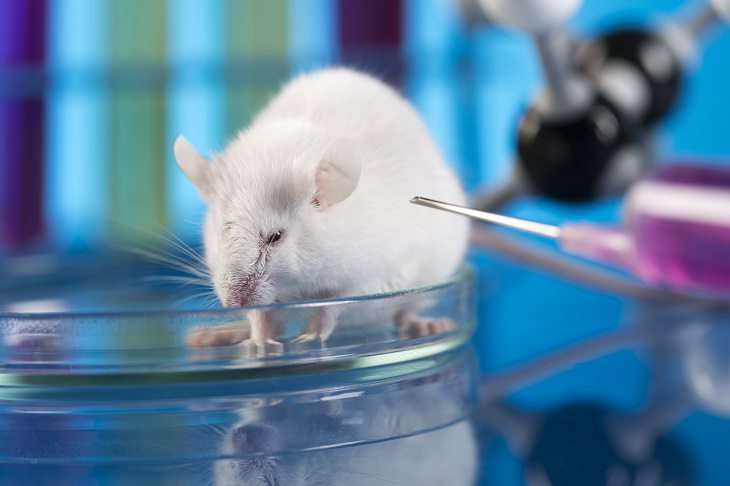
However, the researchers are well aware that what they have accomplished so far is just the first step. While RCas9 works in labs, they still have to figure out how it will fare when tested on humans.
Yeo explains that “the main thing we don’t know yet is whether or not the viral vectors that deliver
RCas9 to cells would elicit an immune response. Before this could be tested in humans, we would need to test it in animal models, determine potential toxicities, and evaluate long-term exposure.”
Ultimately, while RCas9 couldn’t deliver a cure exactly, it could potentially extend a patient’s life. For diseases such as ALS and Huntington’s, that’s a very good place to start.
Source: futurism
Images: depositphotos
 6:17
6:17
Ever Wondered Why the Sun Makes You Sneeze?
Ever wondered why looking at the sun or at bright lights makes you sneeze? Turns out, you have a condition.

9 Inspirational Female Scientists You Should Know About
History is full of women who made significant contributions to science. Let’s meet the most influential ones.

These Non-Routine Medical Tests Could Save Your Life!
Here are 8 non-routine tests that really have the potential to save your life, and some of them even need to be taken as early as 30.
 8:10
8:10
Winter Hikers, Gather Round for the Best Tip of the Season
Here's how advanced snow hikers layer clothing in the winter.
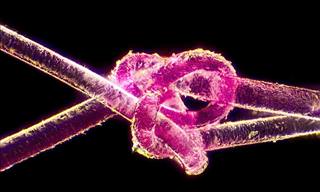
20 Peculiar Microscope Photos That You Really Must See
An unseen world exists at our fingers, and thanks to these wonderful micrographs, we can get a glimpse into that dimension.
 5:04
5:04
Ever Wondered How Hormones Work? Well, Wonder No More...
Ever wondered how hormones work? Well, wonder no more as this informative TED-Ed video explains all!

10 Fascinating Facts About the Subconscious Mind
10 facts about the way the subconscious mind works
 13:55
13:55
The Disappearing Computer: Revolution on a Personal Scale
What happens when we lose the physical large computer all together? This lecture explains what ahead for computers.
 21:51
21:51
This Mind-Blowing Talk Explores the Nature of Reality
In this video, cognitive scientist, Donald Hoffman, attempts to answer this mind-blowing question in this incredible TED talk.
 13:01
13:01
13 Incredible ROOF INNOVATIONS For Your House
Keep the roof of your house safe with these incredibly useful inventions.

You Won't Believe That These Things Exist in Japan...
If there's one place on this planet that well and truly at the forefront of modern technology, it has got to be Japan, as these inventions prove...
 9:31
9:31
The Channel Tunnel - The 7th Wonder of the Modern World!
The construction of the Channel Tunnel is said to be an impossible feat!

10 Classic Paradoxes fom Philosophy, Math, and Physics
in every sphere of human knowledge, we’re bound to run into inconsistencies. That’s how fascinating paradoxes like these are born.

5 Robotics Trends Anticipated in 2024
What does 2024 have in store for the field of robotics?

These Inventions Prove the Middle Ages Were Not So “Dark”
These groundbreaking inventions prove the Middle Ages were not so “dark,” after all!

19 Everyday Items That Started as Military Inventions
Look around your home, and you’ll surely find a handful of these items that were originally developed for the armed forces.
 1:53
1:53
Sci Fi Tech: Jetpack Rescue!
Paramedics in Britain are being trained to conduct mountain or sea rescues using jet suits. Find out more.
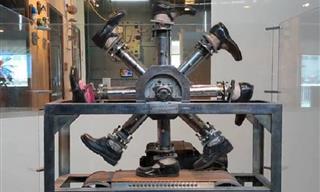
14 of the Most Fascinating Specialized Tools You'll See
We bet you haven’t seen these unique tools before!

Why Do We LAUGH? 7 Studies on the Origins of Humor
As pervasive as it is in our lives, the origin of laughter remains an intriguing enigma. This article investigates the origins of laughter and humor.
 5:13
5:13
Whatever Happened to that Hole in the Ozone Layer?
Let's embark on this enlightening journey to better understand our atmosphere's health.

This South African Plant May be the New Cannabis
Is this plant the new cannabis? What will the woolly umbrella plant do for medicine?

12 Mind-Blowing Archaeological Discoveries Of 2022
Archaeologists made some remarkable discoveries in 2022. Here is a look at the most fascinating ones.
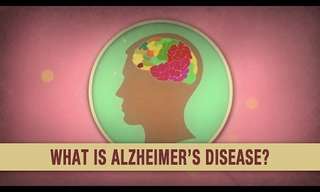 3:50
3:50
Do You Know What Alzheimer's Really Is?
This video will shed light on the different stages of this complex and incredibly destructive disease.
 11:39
11:39
Is There Any Way To Destroy or Deflect Asteroids?
Watch an interview with Cathy Plesko, a leading scientist working on preparing for the dangers of an asteroid attack

The Surprisingly Convoluted History of Traffic Lights
What did the first-ever traffic light look like? Probably stranger than you imagine...
 2:01
2:01
What Does the Appendix Actually DO?
Dr. Berg explains, in this video, all about the appendix and what it actually does in our body.

These Photos Show How Dependent We are On Smartphones
Technology has taken over and these funny (but true) photos help to drive this fact home.
 12:55
12:55
Watch This Man Build a Future Using Trash from the Past
In this video, you will see what this incredible community has been able to accomplish by building homes from recycled materials.

17 Incredible Eye Facts You Have To See To Believe
They say the eyes are the window to the soul, and they also happen to be our windows to the world. Here are 17 insanely fascinating facts about eyes.

Wonder Why Time Speeds Up As You Age? Here's the Answer
We all get the sensation that time moves faster as we get older, but there are scientific reasons for that. Read on to learn about this fascinating phenomenon.
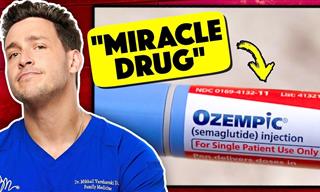 8:24
8:24
Why is Everyone Obsessed with This Weight-Loss Tool?
Ozempic has been touted as a wonder drug for weight loss in recent months. But what's the real truth behind it?
 4:27
4:27
Get a Sense of Scale of Just How Big SpaceX's Rockets Are
SpaceX is achieving incredible things in space, however it's difficult to picture just how big their rockets are. Take a look...
 4:34
4:34
Fascinating Science: How Old Can We Actually Get?
All things being equal, and technology continually progressing - How old can a human body really get?
 4:51
4:51
The Oldest Medicines That Have Stood the Test of Time
Learn about some fascinating old medicine and general healing practices that have survived for thousands of years.

25 Pics Showing How People in the Past Imagined the Future
Let’s see how the people of the past imagined the future and find out if their fun predictions came true with these 25 vintage pictures
 12:57
12:57
The Curious Science of Tricking Your Taste Buds
Did you know you could confuse your sense of taste? Find out how!

6 Weird and Creepy Medical Tools of the Past
After seeing these weird and creepy medical devices of the past, you’ll be thankful you live in the 21st century. Take a look for yourself.
 14:24
14:24
Are Underwater Turbines the Answer to Our Energy Question?
One of the most promising technologies in the renewable energy market is the ocean. Learn all about it.
 12:02
12:02
10 Incredible Animal-Inspired Robots
Let's meet some incredibly realistic robotic animals.
 12:22
12:22
These Experiments Remind Us Water Isn't Just For Drinking
This video will make you stop and think for a second the next time you're having a glass of water as you remember the brightly colored experiments that this video shows us you can do with water
 10:01
10:01
19 Things to AVOID to Make Your Phone Live Longer
19 common mistakes we all make, that make our phones age quicker.
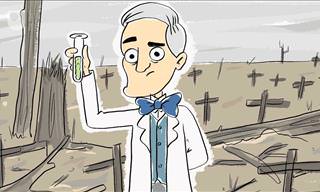 1:44
1:44
The Accidental Discovery of the World’s First Antibiotic
Not too long ago, it was fairly common to die of the simplest of wounds due to bacterial infection. Penicillin changed everything.

6 Shocking Truths About Coffee You Never Knew
Have you been believing these common coffee myths too?
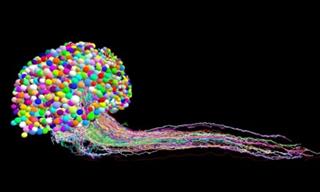
Incredible: First-Ever Complete Map of an Insect's Brain
This incredible project is the first to completely map the brain of an insect, a monumental undertaking even for such a small creature.

These Will Give You True Perspective About Our World
Just to give you an idea of how big the Earth really is in true perspective to all the other heavenly bodies up there in the cosmos.

Science Proves: These 10 Bible Stories Probably Did Happen
The Bible describes many seemingly supernatural cases, but today, science can show that they might have indeed happened.

These Archaeological Finds Left the World Mystified
Find out more about the most mysterious discoveries that archaeologists made.


